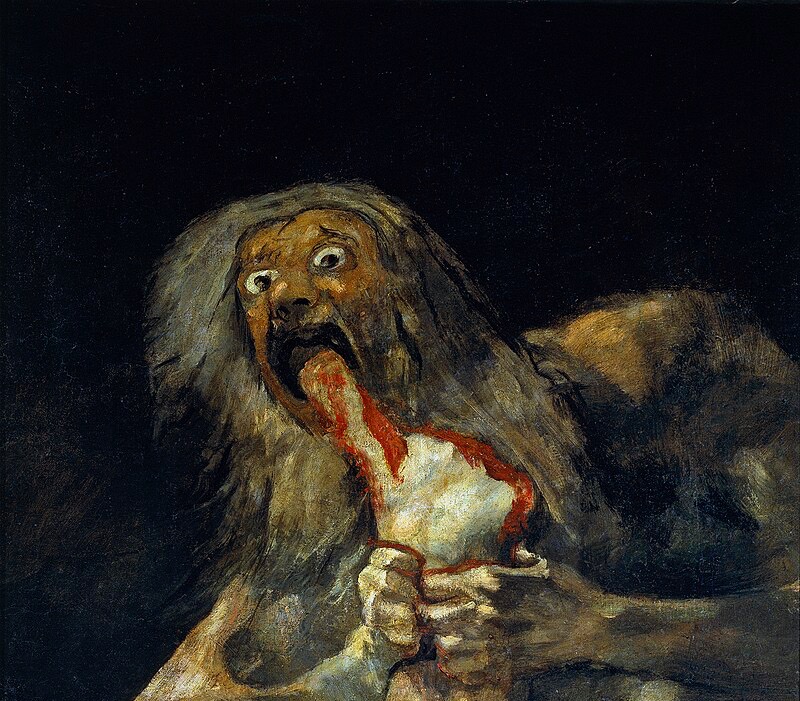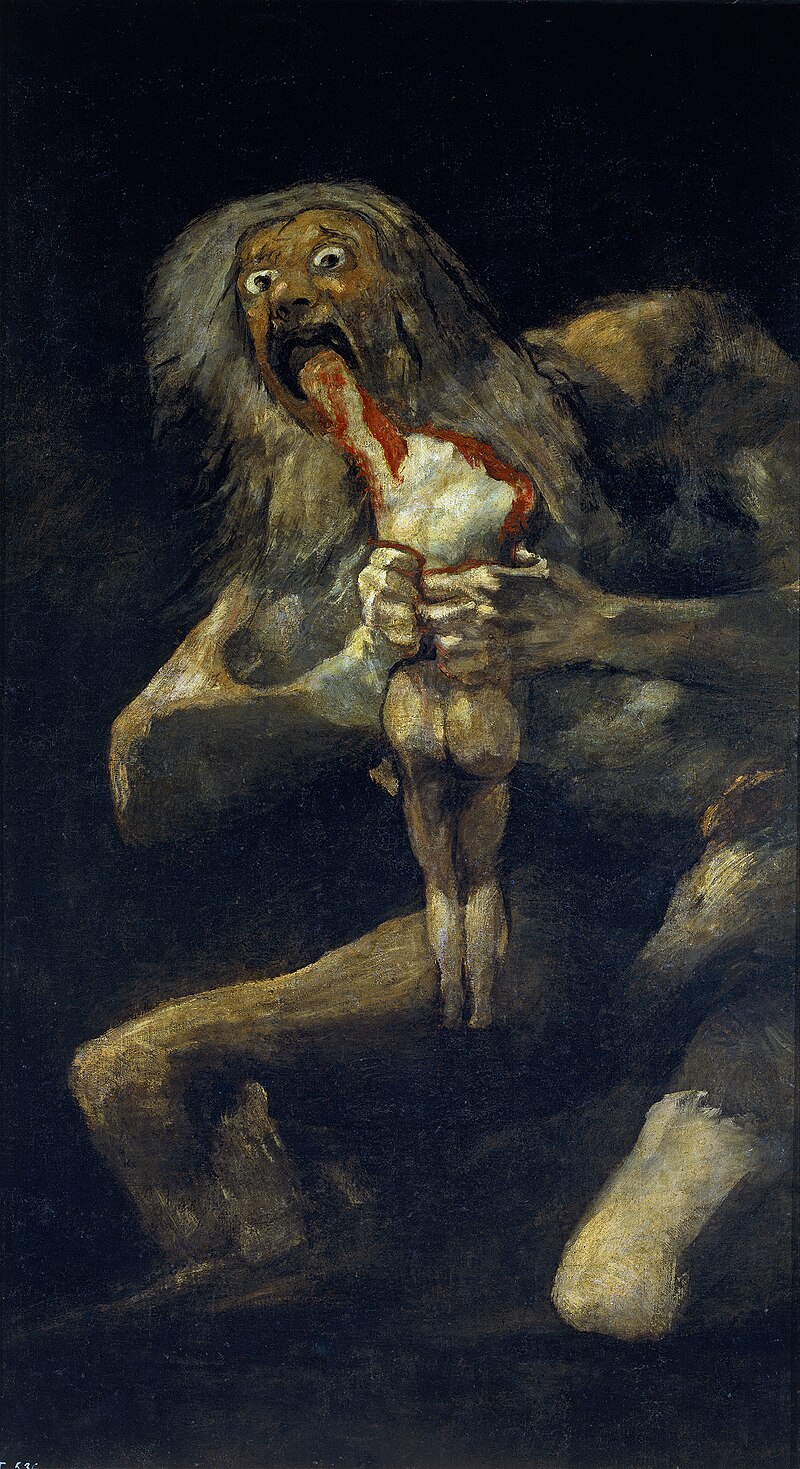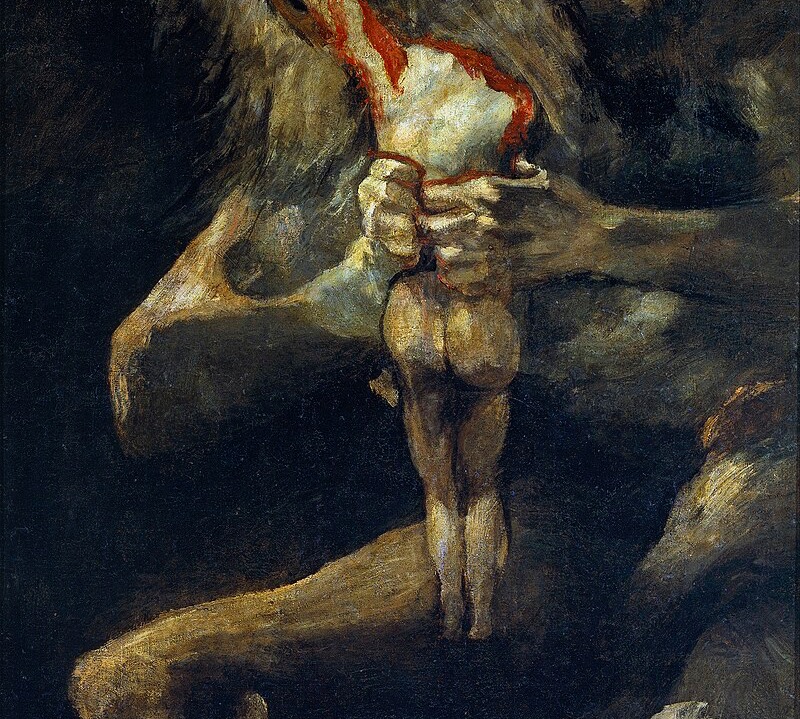
Goya’s Saturn devouring his children is one of those paintings that does not allow the eye to turn elsewhere, despite the fact that the image is terrifying.
Have you ever stood in front of a work of art like this that horrified you but did not allow you to stop looking?
Art, in its purest expression, possesses the unique ability to make us reflect, question and sometimes even disturb. One of the artists who best embodied this expressive power is undoubtedly Francisco Goya, a major figure between the 18th and 19th centuries who continues to influence art and culture in our own day.
Goya’s Saturn devouring his children: analysis and trivia

Goya, who lived in a transitional period between 1700 and 1800, is one of the most important artists in art history.
With a revolutionary approach, he broke away from the conventional painting of the time, which was often limited by rigid academic principles, establishing himself as one of the first figures of the modern era. In fact, he is considered the last of the painters of Neoclassicism and the first of Romanticism.
Goya’s Saturn Devouring His Children represents not only the culmination of his art, but also a symbol of his total creative freedom, being a work that was originally intended neither for public display nor to satisfy the whims of some patron.
THE GENESIS OF SATURN DEVOURING HIS CHILDREN BY GOYA
Created between 1821 and 1823 as part of his famous “Black Paintings,” Goya’s painting Saturn Devouring His Children was initially created in oil on plaster and then transferred to canvas.
This masterpiece, along with other similar works, was intended to be placed in Goya’s house, called the Quinta del Sordo, located near the Manzanares River and a short distance from the heart of Madrid. Purchased in 1819, the residence became an importamtissmo place for the artist, where he could paint freely, away from the critical eyes of the public and without the restrictions imposed by patrons.
After Goya left Spain for France, his house became the residence of his nephew Mariano. However, in 1874, Baron Erlanger purchased the house and, noting the deterioration of the precious paintings, commissioned a delicate process of transferring Goya’s paintings to canvas. This operation was carefully monitored by Salvador Martínez Cubells, at that time conservator of the Prado Museum.
Not long afterward, in 1878, Erlanger made a generous donation of the works to the Spanish state, thus ensuring that “Saturn Devouring His Children” would find a permanent home at the Prado in Madrid, where it is still preserved today.
THE TERROR AND SIGNIFICANCE OF SATURN DEVOURING ITS CHILDREN
The painting depicts the god Saturn in an act of indescribable horror: he is consuming one of his newborn children.
Goya depicts Saturn with a frantic expression, eyes wide open, in a depiction of the fierce urgency of his cannibalistic act. The god’s hands are plunged into the body of the victim, who is completely bloodied.
All of this takes place against a dark background, devoid of spatial references, increasing the feeling of disorientation and terror. Dramatic light, coming from the left, further heightens the tension of the entire scene.
Goya uses quick, powerful brushstrokes to emphasize Saturn’s violent impulsiveness.
Regarding the meaning of the work, multiple interpretations have been proposed. However, the lack of direct documentation makes it difficult to arrive at a definite reading of the work.
Some scholars believe the image symbolizes a conflict between old age and youth, while others see it as an allegory of Ferdinand VII’s oppressive reign, with the Spanish people represented by the worn-out figure.
CURIOSITY
Beyond speculation, it is undeniable that Goya‘s Saturn Devouring His Children reflects Goya’s troubled state of mind during that period. Deeply affected by political circumstances and his growing deafness, the artist withdrew from society, taking refuge in the solitude of his residence.
Although the choice of such a macabre subject may seem innovative, it was not entirely new to Goya. The artist was inspired by the mythological story that Kronos, the youngest of the Titans and son of Uranus and Gaea, was the subject of a prophecy that would see him dethroned by one of his own sons. Fearing that what was foretold might come true, he began to devour his children. Only Zeus was saved by his mother Rhea and, once an adult, he forced Kronos to regurgitate his siblings and surrender the throne.

Goya’s Saturn Devouring His Children is not just a painting but a powerful reminder of how art can reflect the depths of the human soul, the terrors, anxieties and struggles of an era.
Goya, with his bold brushwork and his courage in depicting suffering, invites us to an uncompromising look at the human condition. And you, are you ready to meet Saturn’s gaze?

